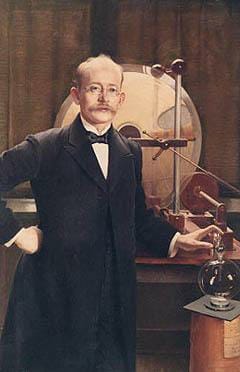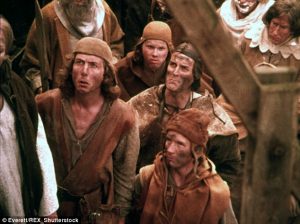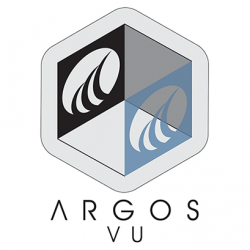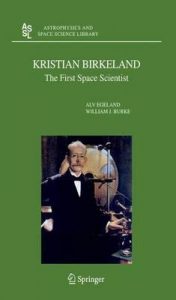The professor whose face is emblazoned on the Norwegian 200-kroner banknote was forgotten for nearly 60 years. Today he is considered one of Norway’s greatest researchers ever.

Norwegian professor Kristian Birkeland (1867–1917) was the very first scientist in the world to realize that the northern lights had something to do with the electromagnetic storms from the sun. He was also the man behind the fantastic invention that enabled the making of fertilizer by harvesting nitrogen from the air. The discovery was the basis for the foundation of Norsk Hydro and the industrial bonanza at Notodden and Rjukan. Last, but not least: Birkeland was responsible for 60 new patents for everything from margarine and caviar to an elctromagnetic cannon. But most important from our perspective today is perhaps that he laid the foundation for much of the modern research conducted in the field of space and solar physics.

Despite Birkeland’s trailblazing inventions, he was nevertheless almost relegated to oblivion. Unfortunately, he was unable to prove his spectacular theories pertaining to the northern lights. International scientists of stature protested vociferously against Birkeland’s theories. Forty years after his death, he was scarcely mentioned in the textbooks used at the University of Oslo (UiO). It was only later, when it became possible to perform measurements from satellites in space, that his northern light- and disturbances in Earth magnetic field – theories, were confirmed.
For the past twenty years, his face has adorned the Norwegian 200-kroner banknote, although few people have paid much attention to the figure on the widely used banknote.
The UiO is now planning to celebrate the 150th anniversary of the professor and inventor with a number of events in both Norway and Japan.
Although Birkeland is beginning to be recognized and has become the subject of much writing, there are still many anecdotes from his life as a researcher that the general public has not yet heard.
A scientific goldmine
One person who knows very much about Birkeland is Professor Emeritus Alv Egeland (85) of the Depatment of Physics. Egeland was involved 50 years ago in arranging the centennial observance in honour of Birkeland, in 1967. He has also authored several books on Birkeland.
The Scottish and German physicists James Maxwell (1831–1879) and Heinrich Hertz (1857–1879).were two sources of inspiration for Birkeland. Both were leading authorities in the field of electromagnetism. Maxwell was the theoretician. He described how electromagnetic waves move and spread. Hertz was the experimenter. He managed to test Maxwell’s theories in practice.
“Electromagnetism became a new-found goldmine for young Birkeland. Already as a schoolboy he had bought his own magnet – with his own money. He used the magnet for many surprising experiments and practical jokes during school lessons. Not all of Birkeland’s teachers were impressed with his experiments.”
Later in life, Alv Egeland relates, Birkeland’s studies of electromagnetism and the Earth’s magnetic field would become the most important contributions of his research.
As soon as Birkeland had graduated from university, he began experimenting with electrical oscillations along a metal wire.
In 1895 he began pioneer studies of cathode rays, a stream of electrons in a vacuum tube that occurs through high voltage passing between negative and positive charged electrodes.
“Birkeland concluded that the cathode rays consist of electrically charged particles and can be controlled by a magnetic field.”
Created artificial northern lights
During the next year, Birkeland became interested in the connection between sunspots and the northern lights. He used cathode rays to create artificial northern lights in a laboratory, and he concluded that the aurora borealis is caused by electrically charged particles from the sun that are guided into the polar atmosphere by the geomagnetic field around the Earth. He was also of the opinion that the atmosphere consisted of vast numbers of electric particles.

“Birkeland’s northern lights theory was based on electromagnetic forces in space, from the sun. How he came upon the idea is still a mystery. Birkeland’s hypotheses were not confirmed until the space age, some sixty years later. Even today, more than fifty years after the dawn of the space age, his visionary far-sightedness is impressive,” Egeland says.
It was not until the 1970s, at a time when it was possible to carry out exact measurements via satellites, that Birkeland’s theories were proved to be correct. Particles from sun storms strike the Earth with violent force. The particles are slowed down by the ionosphere. This friction transfers so much energy to the particles in the atmosphere that they light up.
Before Birkeland arrived on the scene, many researchers thought that the Aurora Borealis was caused by a special northern lights gas, particles containing iron, local electrical currents in the atmosphere or meteor dust.
“Although Birkeland’s hypothesis was the first realistic theory pertaining to the northern lights, the explanation for the various shapes, colours, movements and altitudes of the northern lights had to be left to space-age researchers.”
Birkeland experienced very little support during his lifetime, particularly from the foremost researchers in England. They were not convinced that the sun was the source of the northern lights. We will come back to this tremendous criticism below.
This is a tale describing how renowned researchers kick the legs out from under innovative ideas that depart from generally accepted, mainstream notions. But first, let us enjoy some entertaining details based on his experiments.
Recreated the universe
Birkeland made reproductions of the solar system and the Earth in a vacuum chamber. These were called the Terrella experiments. The term terrella is Latin and means ‘a small model of Earth’.
“The experiments were time consuming. It took several days to create a vacuum in the chamber. He placed an electromagnet inside the terrella. With this, he was able to produce artificial northern lights. But there are some misconceptions in the anecdote about Birkeland. The first experiments involving artificial northern lights were conducted inside a discharge tube,” Alv Egeland points out.
During the ensuing years, Birkeland made newer and better terellas.
“The experiments were brilliant, not least taking into account that science at the time had not defined electrons as separate particles,” Professor Jøran Moen in the Physics Department explains.
The mass of the universe in the largest terella model was approximately 1000 litres. Birkeland shot clouds of electrons at “Earth” with electrical current from a generator. The voltage was 25,000V. That is more than one hundred times the voltage in your household outlet.
“Birkeland gradually became increasingly interested in the sun, the comets, the rings of Saturn, outer space and the origin of the physical world, which he wrote much about in his 850 page major research contribution,” Alv Egeland says.
His experiences were far from an inexpensive pastime. They were costly to conduct. This was a time when Norway was a poor country and the university had little money.
“His wages from the university were insufficient. He covered the major part of the costs himself, and he spent his personal earnings from Hydro to finance the laboratory and the wages for the six to eight assistants he employed. Oslo University Rector Sem Sæland, presiding from 1928 to 1936, would say that no other employee had ever spent so much of his own salary on research he conducted himself.”
Strenuous winter
One of Birkeland’s greatest wishes was to determine the altitude of the northern lights. There was during an era when the northern lights were thought to descend all the way down to treetop level in Lappland. We know today that the northern lights are created several hundred kilometres above ground level.
To discover this, Birkeland had a research station built on top of the Samis’ “Sacred Mountain” Haldde, at almost a thousand metres above sea level overlooking Kåfjord in Alta.
[google_maps id=”10401″]
The ascent was strenuous. At the time, the trek on foot took about four hours. When they were trying to find the most suitable summit for a new observatory, they came close to perishing in a blizzard.
Brikeland spent the winter on the summit of Haldde with two assistants. There were storms or hurricane gales every other day. Several of their scientific instruments were destroyed and had to be repaired. Smoke flow reversal from the coal stove would fill the dwelling with fumes. They moved from place to place on skis, snowshoes and crampons when conditions were icy. One of the assistants died in an avalanche in March.
Ten years later, Birkeland built a more comfortable and larger observatory at the top of Mount Haldde. During the period 1912–1919, seventeen persons lived on the mountaintop, seven of them children. Three of the these were born up there.
During this period, the research stations were also used for meteorological observations. Although the northern lights never even grazed the summit of the mountain, Birkeland continued his research, tirelessly and with renewed perseverance.
Deafening noise
One of his great sources of pride was an electric cannon he made. It was meant to be fired, but using electricity instead of gunpowder. Ten kilo pieces of iron were propelled out of the cannon’s mouth at such velocity that they exited with the force of bullets.
Kaiser Wilhelm of Germany hoped that the invention would revolutionize warfare. The French Ministry of War was very interested in Birkeland’s cannon.

The cannon was publicly tested in 1903 in the venerable banqueting hall, now known as the Old Banquet Hall in the Domus Academica building on Karl Johan gate. The test firing was a failure, but it marked the beginning of the largest industrial adventure in the history of Norway.
There were great expectations. The banquet hall was filled with guests. Two cabinet ministers and representatives of industry were present – along with agents from the international arms industry. Fridtjof Nansen observed the proceedings attentively from the first row.
“The projectile to be fired from the cannon weighed ten kilogrammes” Birkeland reassured the assembly: “You can sit calmly, Ladies and Gentlemen. When I turn the switch on, you will neither see nor hear anything but the sound of the projectile striking the target.” He then flipped the switch, Egeland relates in his book titled Natural Scientist and Industrial Researcher Kristian Birkeland.
There was a deafening, crackling and sputtering commotion.

The cannon had short-circuited. Flames spewed out of the mouth of the cannon. Some women shrieked and «squealed out of fear», and for a moment there were signs of panic in the hall..
“It was the most dramatic incident in my life. With that single shot, my shares plummeted from 300 to zero, but the projectile struck the target,” Birkeland commented afterwards.
When he had tested the cannon earlier the same day, everything had functioned as intended.
“The attention attracted by the event was predictably negative, but Birkeland got considerable enjoyment out of the uproar,” says Alv Egeland.
The electric inferno that shot out of the cannon had a temperature of more than a thousand degrees and was later called Birkeland’s ‘plasma arc’.
The high temperature is due to electrically charged particles shooting back and forth at high speed.
“Electrons in motion result in intense electrical currents surrounded by a magnetic field. This resembles a solar wind plasma in the cosmos.”
Birkeland soon observed the unanticipated. In the coil’s magnetic field, the electric arc from the short-circuiting spread out in a fantail shape – and herein lies Birkeland’s discovery.
“The fiasco was forgotten. From this point on, Birkeland was interested in the electric arc,” Alv Egeland writes.
Founder of Norsk Hydro
The cannon experiment led to unanticipated consequences. Some years earlier, the British researcher Sir William Crookes had alerted the scientific community to the scarcity of calcium nitrate in the world, one of the main ingredients in the manufacture of fertilizer. Crooke’s idea was that a solution to producing fertilizer could be fond in retrieving nitrogen directly from the air. He thought that this would be one of the greatest inventions in the future and could save the world from impending famine.
The failed cannon firing in the venerable Old Banquet Hall became precisely the foundation for modern fertilizer production.
The shape of the light arc confirmed some of the theories that Birkeland had already conceived.
The light arc was able to break the triple bond in the nitrogen molecules. The torch-like flame produced nitrogen oxide, which is the basic compound in saltpetre and a key element in fertilizer.
Scientists and industrialists throughout the world had been on a quest to find a solution. Birkeland pipped them all at the post.
The discovery was a cornerstone in the founding of Norsk Hydro. Artificial production of saltpetre demanded enormous amounts of energy. Norway was richly endowed with waterfalls. Consequently, the price of electricity was low.
“This is a fantastic story. Norsk Hydro would perhaps never have seen the light of day without the accidental explosion in the Old Banquet Hall. Such is the world of research. Ideas suddenly simply occur,” says solar researcher Pål Brekke, Senior Advisor at the Norwegian Space Centre.
Although the unsuccessful experiment in the Old Banquet Hall has gone down into the history books as precisely the day the idea occurred to Birkeland, Alv Egeland points out that Birkeland had possibly already thought of the idea prior to the failed demonstration.
Birkeland met industrial entrepreneur Sam Eyde at a dinner hosted by Cabinet Minister Gunnar Knudsen three weeks before the short-circuit accident in Domus Academica.
“Sam Eyde was a formidable driving force. He was already negotiating with the Germans to manufacture fertilizer from the atmosphere.”
Sam Eyde and Birkeland took to one another immediately. Birkeland began at once conducting experiments at the university.
At the time, Eyde was one of Norway’s most famous men. The media pursued him closely.
“He was well aware of how to capitalize on an event.”
The explosion in the Old Banquet Hall was alluring bait for the media.
At any rate, when the discovery began bearing fruit,
“Birkeland’s discovery and collaboration with Eyde marked the start of the industrial bonanza atNotodden and Rjukan. Eyde became «royalty» at Rjukan and was many times more famous than Birkeland,” Alv Egeland underscores.
Sad fate
During the last five years of Birkeland’s life, he was fascinated by zodiacal light, a peculiar glimmering light at the equator that is only one millionth of the luminosity of the full moon. Birkeland was able to establish that the light was caused by cathode rays from the sun. He had a notion that the light varied in proportion with solar activity and with disturbances in the Earth’s magnetic field.
After a lengthy stay in Africa, he longed to return to Norway, but at this time the First World War was raging. Therefore, he made a detour via Tokyo, where he had close colleagues and friends.
Birkeland was mentally unbalanced and only fifty years old when he ended his life in the Japanese capital city. Following his death, he was almost totally forgotten, until modern space exploration towards the late 1960s made it possible to prove Birkeland’s theories on the northern lights.
“Birkeland represented the upper crust of the Norwegian scientific community. As an outspoken visionary, he met resistance, particularly among the mainstream British researchers. One disadvantage for Birkeland was that most of his scientific papers were written in French – not in English.”
British ridicule
After Birkeland’s death, his theories bore the brunt of heavy criticism from the English academy of science, the Royal Society. The front-line critic was Professor Sydney Chapman, a brilliant mathematician and physicist, as well as the greatest space researcher of the 20th century.

The British disagreed with Birkeland’s theory on the northern lights and instead supported the notion that they were caused by a system of local electrical currents in the upper atmosphere.
“When researchers from the Royal Society spoke, there were few who dared to dispute what they said, according to Alv Egeland, who majored in physics himself at the end of the 1950s.”
During this era, everyone referred to Chapman and the British school. Chapman’s writings were on the syllabus at the University of Oslo. Birkeland’s auroral theory and the terrellas were scarcely mentioned. His theories were practically ridiculed.
“Chapman was a genius of a researcher and highly respected, but he refused to condone a theory that could not be proven. It was impossible to take test measurements in outer space before the advent of satellites. Birkeland’s genius consisted in simulation; whereas Chapman and all the others based their theories on less observations and statistical models, Birkeland simulated space in a laboratory. No one before him had done this.”
In 1967, a century after Kristian Birkeland’s birth, the International Association of Geomagnetism and Aeronomy (IAGA) arranged the first Birkeland Symposium in Sandefjord.
A total of 170 researchers from the entire world discussed the latest achievements in the field in which Birkeland had been a pioneer.
It was proposed to designate the source of the northern lights as “Birkeland currents”.
“The keynote guest, Chapman, opened the symposium. We thought he would praise Birkeland, but he did not express himself in very diplomatic terms and he shocked many of the listeners. He was unable to say anything positive about Birkeland’s research. In his opinion, Birkeland had produced a mix of facts and errors.”
The first observations from satellites were already being recorded, but the quality of the data was still insufficient.
It was not until the beginning of the 1970s that the British school accepted the proof that the electrical currents flowed in the manner Birkeland had theorized 60 years earlier.
“What did Chapman have to say then?”
“It took a while, but he finally apologized for having been mistaken. His comments about Birkeland became less critical, and more and more researchers began to accept Birkeland’s explanation. A few years later, Chapman wrote that Birkeland had achieved important advances in explaining the northern lights and magnetic storms,” Egeland recounts.
A period of sixty years had passed from the time Birkeland advanced his northern lights theory until the theory was proven.
“It was not until then that researchers acknowledged the fact that Birkeland had been right all along,” says Pål Brekke.
Nominated to receive the Nobel Prize
Kristian Birkeland was nominated for the Nobel Prize eight times, four times in chemistry and the other four times in physics. However, he was never awarded the prize. It was unfortunate for Birkeland that Sam Eyde insisted that Birkeland would have to share the Nobel Prize with him. This precluded any chance of getting the prize.
“Sam Eyde was not a scientist, but despite this, he was much more obsessed with getting the prize than Birkeland was. Eyde also felt that if he could not have the prize, it was best if Birkeland did not receive it either.
However, in 1994, Birkeland was deservedly honoured. His portrait was chosen for the front side of the Norwegian 200-kroner banknote.”
Birkeland’s heritage
Professor Jøran Moen, who currently holds Birkeland’s professorship , is one of Norway’s foremost researchers of the northern lights and the upper regions of the Earth’s atmosphere.
“Space research has demonstrated that Birkeland was incredibly visionary. His hypotheses about the sun and the universe were the object of much attention after satellites began to reveal many of the secrets of space,” Jøran Moen points out.
“I became fascinated by the solar-terrestial coupling, and by Birkeland’s personal history. He is the one who inspired Norwegian interest in solar research,” Pål Brekke says.
Today, studies of the atmosphere are conducted at universities in Oslo and Tromsø, at the Birkeland Centre in Bergen and the University Centre in Svalbard (UNIS). Andøya Space Center on the outermost ocean shoreline in Vesterålen, is also an important contributor. Research rockets are launched and are used to measure how the sun affects the atmosphere on Earth.
“All this can be related back to Birkeland,”Pål Brekke notes, adding that Norway – thanks to the country’s early efforts in the field of solar research – were contributors to NASA’s SOHO satellite, which is still circling the sun after 22 years, the Japanese satellite Hinode and the American IRIS satellite. The Institute of Theoretical Astrophysics at UiO is the keeper of the data from these satellites after the information has been retrieved from space via the enormous antennas at Svalsat in Svalbard.
The fact that Norway should become the leading nation in solar physics was not a predictable development, but Norway benefited from Birkeland’s heritage. We own the whole pot of honey, Pål Brekke muses.
Humankind uses increasingly more technology that is vulnerable to solar storms. When the northern lights are violently active, it has an impact on our navigation systems.
Our big dream is to design weather stations in space that can forecast times when navigation can be trusted.
“Birkeland has been very important in this connection. He established the very first space research in Norway. Because Norway has a particularly good location that enables us to cover the entire daily cycle of the northern lights, with the night aurora in Tromsø and the daytime aurora in Svalbard, we have had excellent conditions for continuing his work,” Jøran Moen states.
He adds that Birkeland and his co-workers were the first scientists who saw the need to combine theory, experimentation and calculations. In our modern era, these things are now taken for granted in all natural science disciplines.
A still unresolved problem
Although it is now a century since Kristian Birkeland’s death, all the physical mechanisms in the atmosphere are still not yet fully understood.
One of the biggest challenges is how to explain the turbulence in plasma. Plasma is gas with charged atoms. The entire ionosphere, which is the outermost layer of the exosphere, consists of plasma. Plasma is affected by electromagnetic fields.
When solar storms rain down on the Earth, they cause turbulence in the plasma. This in turn changes the direction of radio and GPS signals. To be able to predict how weather in space will be, one has to understand how the turbulence behaves.
Solar storms contain large amounts of energy.
“Turbulence is one way by which to break down the energy. Energy never disappears, but changes form continually, such as into waves, instability or heat. Unfortunately this is a basic issue in classic physics, and we do not fully understand it,” Jøran Moen admits.
Turbulence is impossible to study from here on Earth. The satellites, in addition, are in orbit too high in space. The solution, therefore, is to measure turbulence using rockets. During recent years, Moen has launched a number of rockets.
A single rocket returns measurements along only one trajectory.
“We need three-dimensional measurements.”
To solve this, Jøran Moen – in cooperation with NASA – will now launch four parallel rockets at the same time. They will be launched at the turn of 2018-2019.
“What would Birkeland do if he had been alive today?”
“I have given that a lot of thought. Most likely, he would have continued to research electromagnetism, because it is a field that still has many puzzles left to solve.”
“To understand the extosphere (Earth’s atmosphere), we need to understand more about its connection with the solar atmosphere. Our understanding of the sun is still lacking, and we still cannot forecast the weather in space. Once we have understood all this, we will also be able to understand the atmosphere on other planets,”Jøran Moen concludes.







